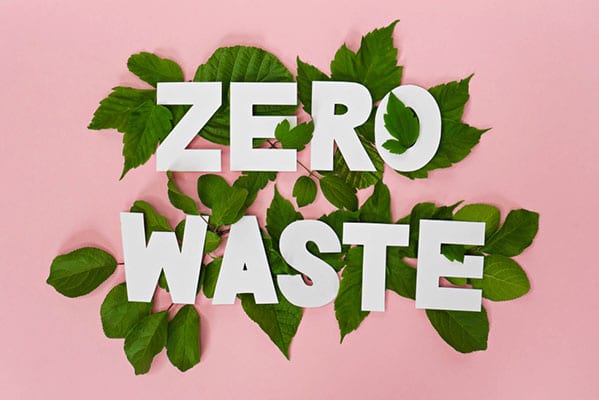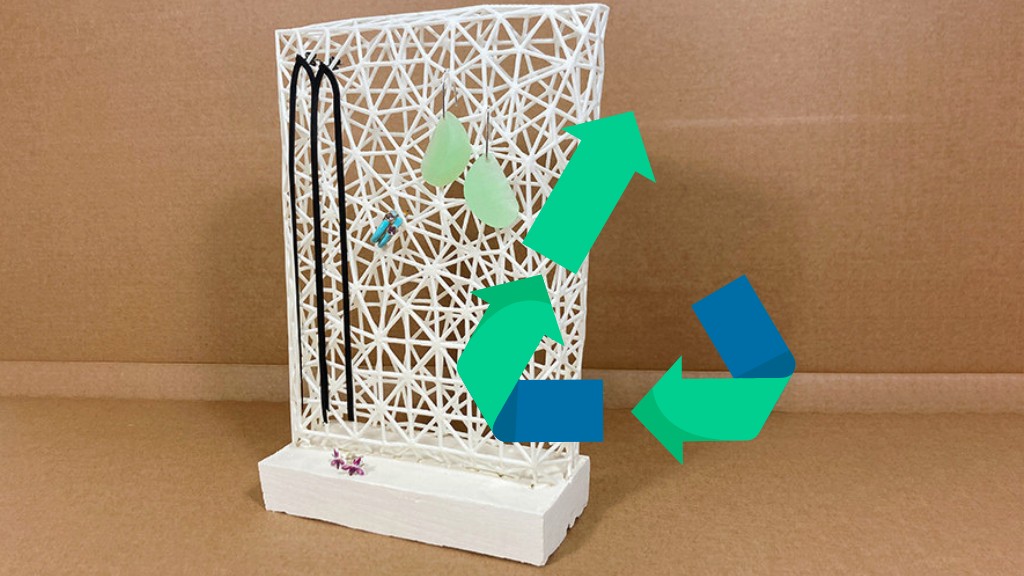Achieve sustainable making with zero waste 3D printing. Learn to reduce, reuse, and recycle filament, minimize failed prints, and choose eco-friendly materials.

Table of Contents

- What Constitutes Waste in 3D Printing?
- Why Pursue a Zero-Waste Approach?
- Pre-Printing Strategies for Waste Minimization
- Choosing Sustainable 3D Printing Materials
- How to Manage and Repurpose 3D Printing Scraps
- The Future of Sustainable Additive Manufacturing
Zero Waste 3D Printing: Your Complete Guide to Sustainable Making
Additive manufacturing has revolutionized prototyping, custom fabrication, and small-scale production, offering unparalleled design freedom. However, this creative potential comes with an environmental cost: plastic waste. From tangled “spaghetti” monsters to piles of support structures, every maker is familiar with the byproducts of the printing process. Adopting a zero-waste mindset is not about halting innovation; it is about refining the process to be more efficient, economical, and environmentally responsible. It involves a conscious effort at every stage, from digital design to material selection and post-processing.

What Constitutes Waste in 3D Printing?
Understanding the sources of waste is the first step toward eliminating them. In a typical workshop, waste is generated in several predictable forms. Each represents an opportunity for improvement, a puzzle to solve in the pursuit of greater efficiency. Identifying these streams allows makers to target their efforts and make the most significant impact on their material consumption.
Failed Prints and Prototypes
The most visible form of waste is the failed print. These can result from a myriad of issues, including bed adhesion failure, which causes a print to detach mid-process; layer shifting, where upper layers are misaligned with lower ones; or a clogged nozzle leading to under-extrusion. The infamous “spaghetti monster,” a tangled mess of filament, is a classic example of a print gone wrong. Each failed iteration, whether a minor flaw or a complete disaster, consumes time, energy, and a significant amount of plastic material that did not contribute to a final, usable object.
Support Structures, Rafts, and Brims
Many complex designs with significant overhangs require support structures to prevent drooping or collapse during printing. Similarly, rafts and brims are often used to ensure a print sticks firmly to the build plate. While essential for achieving a successful outcome on challenging models, these elements are purely functional and are designed to be removed and discarded after the print is complete. For intricate models, the weight of the support material can sometimes rival the weight of the final object itself, effectively doubling the plastic used for a single part.
Filament Scraps and Spools
Smaller, less obvious sources of waste add up over time. These include the snippets of filament cut during loading and unloading procedures, purge lines printed at the start of a job, and the final few meters of material left on a spool that may be too short to use for a substantial project. The empty plastic spools themselves also present a disposal challenge. While seemingly minor, this accumulated scrap represents a steady drain on resources and a contribution to the plastic waste stream.
Why Pursue a Zero-Waste Approach?
The motivation to minimize waste in additive manufacturing extends beyond simple tidiness. It is rooted in a combination of environmental stewardship, economic prudence, and a core philosophy of craftsmanship. Embracing these principles transforms 3D printing from a purely consumptive hobby into a more sustainable and intentional creative practice.
The Environmental Impact of Plastic Filaments
Most common 3D printing filaments, like ABS and PETG, are petroleum-based thermoplastics. Their production consumes fossil fuels, and their disposal contributes to the global plastic pollution problem. When sent to a landfill, these materials can take centuries to break down, potentially leaching chemicals into the environment. Even PLA, a bioplastic often touted as “biodegradable,” only decomposes under specific industrial composting conditions not found in a typical landfill or backyard compost pile. A zero-waste approach directly addresses this by reducing the volume of new plastic entering the waste stream.
The Economic Benefits of Reducing Waste
Filament costs money. Every failed print, every discarded support structure, and every unused meter of plastic is a direct financial loss. By optimizing print settings to reduce failures and minimize support material, makers can significantly lower their operational costs. A kilogram of filament can go much further when a higher percentage of it becomes part of a successful, final product. Over time, these savings can be substantial, allowing for more ambitious projects or investment in higher-quality materials and equipment.
Aligning with a Maker Ethos of Efficiency and Responsibility
True craftsmanship is about more than just the final product; it’s about the entire process. It embodies principles of resourcefulness, precision, and respect for materials. A zero-waste philosophy aligns perfectly with this ethos. It challenges makers to be smarter in their designs, more meticulous in their machine calibration, and more creative in their use of byproducts. This commitment to efficiency and responsibility elevates the craft, fostering a deeper connection to the making process and a sense of pride in creating objects that are not only useful but also mindfully produced.
Pre-Printing Strategies for Waste Minimization
The most effective way to reduce waste is to prevent its creation in the first place. By focusing on the digital and mechanical setup before a single layer of plastic is extruded, you can drastically increase your success rate and minimize material usage. This preparatory phase is where a maker’s skill and attention to detail have the greatest impact.
Optimizing Your Digital Design
Waste reduction begins on the computer. Before slicing, analyze the model for printability. Can the object be reoriented on the build plate to reduce or even eliminate the need for supports? A 45-degree overhang is often the maximum an FDM printer can handle without support, so designing with this limitation in mind can be a powerful waste-saving tool. Consider splitting a complex model into smaller, easier-to-print parts that can be assembled later. Exploring “print-in-place” designs, which feature integrated moving parts, can also eliminate the need for assembly and associated support waste.
Fine-Tuning Slicer Settings
Your slicer software is your primary control center for material usage. Instead of using default settings, take the time to customize them for each print. Reduce infill percentage for non-structural parts; a 10-15% infill is often sufficient for decorative objects. Experiment with infill patterns like “gyroid” or “lightning,” which provide excellent strength with less material. Most importantly, optimize your support settings. Use “tree” supports where possible, as they use significantly less material than traditional linear supports. Increase the support overhang angle threshold to challenge your printer to bridge small gaps without assistance.
Proper Machine Calibration and Maintenance
A well-calibrated and maintained printer is a reliable printer, and reliability is key to preventing failed prints. The single most important factor is a perfectly leveled and clean build plate, which ensures strong first-layer adhesion. Calibrate your extruder’s E-steps to ensure it is pushing out the precise amount of filament required, preventing both under- and over-extrusion. Regularly check belts for proper tension and ensure all axes move smoothly without binding. A few minutes spent on maintenance before a long print can save hours of frustration and kilograms of wasted plastic.
Choosing Sustainable 3D Printing Materials
The material you print with is a fundamental component of a sustainable workflow. While no filament is perfect, several options offer significant environmental advantages over traditional petroleum-based plastics. Making a conscious choice here can dramatically lower the ecological footprint of your projects. Just as we at Beldturaleather select sustainable, vegetable-tanned full-grain leather for its longevity and minimal environmental impact, choosing the right filament is the first step towards responsible making.
The Role of PLA (Polylactic Acid)
PLA is the most popular hobbyist filament for a reason: it is easy to print, affordable, and derived from renewable resources like corn starch or sugarcane. It is often marketed as “biodegradable,” but this requires a crucial distinction. PLA will not break down in a landfill. It requires the high heat and specific microbial conditions of an industrial composting facility to decompose. While it is a step up from fossil fuel-based plastics, its end-of-life disposal must be handled correctly to realize its environmental benefits.
Embracing Recycled Filaments (rPETG, rPLA)
A growing number of manufacturers are producing high-quality filaments made from post-industrial or post-consumer plastic waste. Recycled PETG (rPETG), often made from discarded plastic bottles, and recycled PLA (rPLA), made from manufacturing scraps, are excellent choices. These materials close the loop, turning waste into a valuable resource and reducing the demand for virgin plastic production. Opting for recycled filaments directly supports a circular economy within the additive manufacturing industry.
Exploring Bio-Composites and Experimental Materials
Innovation in material science is yielding exciting new options for eco-conscious makers. Filaments blended with organic materials like wood dust, coffee grounds, or hemp fibers offer a unique aesthetic and can reduce the overall plastic content of a print. Furthermore, research into truly biodegradable polymers like PHA (Polyhydroxyalkanoate), which can decompose in marine and soil environments, holds great promise for the future. While more specialized, these materials push the boundaries of sustainable fabrication.
| Material | Source | Pros | Cons | Best Use |
|---|---|---|---|---|
| PLA | Renewable (Corn, Sugarcane) | Easy to print, low odor, derived from plants. | Brittle, low heat resistance, requires industrial composting. | Prototypes, decorative models, non-functional parts. |
| rPETG | Recycled Plastic (e.g., Bottles) | Strong, durable, high heat resistance, supports circular economy. | Can be stringy, requires higher print temperatures. | Functional parts, mechanical components, outdoor items. |
| rPLA | Recycled PLA Waste | Similar properties to virgin PLA, reduces manufacturing waste. | Can have slight color inconsistencies. | General-purpose printing where sustainability is a priority. |
| Wood-Fill | PLA mixed with wood dust | Attractive wood-like finish, can be sanded and stained. | Abrasive to standard nozzles, can be brittle. | Aesthetic models, architectural mockups, decorative items. |
How to Manage and Repurpose 3D Printing Scraps
Even with perfect prints, some waste in the form of supports and scraps is inevitable. A true zero-waste workflow addresses what to do with this unavoidable byproduct. Instead of viewing it as trash, consider it a raw material for new creative endeavors or a resource to be fed back into the system.
Can You Recycle 3D Printer Filament?
Unfortunately, you generally cannot toss your 3D printing scraps into your municipal recycling bin. Most prints are made from materials like PLA or PETG, which are often classified under the generic “Number 7” recycling symbol for “other” plastics. These are not typically processed by local facilities. Recycling requires sorting plastics by type, and the variety of additives and colors in filaments makes this process difficult on a large scale. Specialized recycling services for 3D printing waste exist but are not yet widely available.
Upcycling Failed Prints and Supports
The most accessible way to deal with scraps is to upcycle them. This approach mirrors the resourcefulness of traditional crafts, much like how leather scraps can be used for smaller goods like keychains or coasters. PLA scraps can be melted down in a toaster oven (in a well-ventilated area) and cast into simple molds to create new blocks of plastic for carving or machining. Smaller scraps can be used as filler for other cast projects or even be used in artistic mosaics. This method treats waste not as an endpoint, but as a resource for a different kind of making.
Investing in a Filament Extruder
For the truly dedicated maker, the ultimate solution is to create a closed-loop recycling system. This involves a plastic shredder and a filament extruder. Failed prints and supports are shredded into small, uniform pellets. These pellets are then fed into the extruder, which heats and pushes the molten plastic through a die to create brand-new, usable filament. While this requires a significant initial investment in equipment, it offers the highest level of material autonomy and brings a workshop as close as possible to a truly zero-waste operation.
The Future of Sustainable Additive Manufacturing
The movement toward sustainability in 3D printing is gaining momentum, driven by technological innovation and a growing sense of responsibility within the maker community. The future points toward a more integrated, circular, and mindful approach to digital fabrication, where waste is not just managed but designed out of the system entirely.
Innovations in Circular Economy Models
Companies are beginning to experiment with new business models that promote sustainability. Imagine filament subscription services that ship new spools in reusable packaging and accept your old scraps and empty spools for recycling and credit. Centralized, regional recycling hubs for 3D printing materials could make proper disposal more accessible for everyone. These systems shift the burden of recycling from the individual maker to a more efficient, specialized service, fostering a true circular economy.
Advancements in Biodegradable Polymers
Material science will continue to be a key driver of sustainability. The development of next-generation biopolymers that can biodegrade in home compost or even natural environments would be a game-changer. Research is focused on creating materials that offer the mechanical properties of traditional plastics but with a vastly improved end-of-life scenario. These advancements will reduce the long-term environmental impact of the objects we create.
The Shift Towards Mindful Making
Perhaps the most significant change will be cultural. There is a growing emphasis on moving away from printing disposable trinkets and toward creating durable, useful, and long-lasting objects. This philosophy prioritizes quality over quantity, encouraging makers to invest their time and material in projects that solve real-world problems or provide lasting value. This focus on longevity and purpose is the cornerstone of sustainable making, ensuring that the things we create are cherished and used, not quickly discarded. It is a modern expression of the timeless principle of building things to last.


